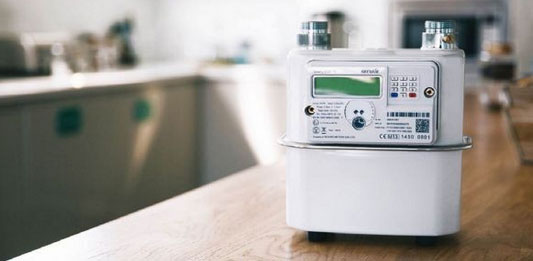Analysis of Several Difficulties in the Development of Intelligent Electric Meters
Unlike traditional meters, smart meters can be an important development threshold for the development of smart grids in the future, and smart meters can also connect advanced application fields such as the Internet of Things and smart homes, not only providing more intelligent power configuration optimization benefits, but also improving more efficient energy application intelligent management mechanism, which has important existing value in introducing green energy or reducing household energy consumption
The key to the development of smart grid and smart energy application environment lies in the energy application metering device on the client side, which is generally referred to as the smart meter measurement terminal. With the application direction of smart meters, compared with the old non-intelligent design meters, in addition to simple digital power consumption monitoring, data measurement/recording, there will also be relevant intelligent functions for power control, With the Netcom system or architecture that can save and transmit the information recorded by the electricity meter, it can meet the basic terminal application requirements of the smart grid.
It is difficult to intelligentize the electricity meter, which needs to take into account the cost and the flexibility of multimode Netcom support
Because the smart electricity meter is not just to digitize the electricity metering mechanism and integrate the network communication function with the electricity meter, but in addition to digitizing the original electricity meter architecture, the smart electricity meter must be developed for the advanced intelligence and network communication function integration required for the smart electricity meter to connect with the smart grid, and even for the advanced multimode support and highly flexible architecture design required for the smart grid in the future, In response to the deployment requirements of smart meters, integrating smart applications and the network environment that can connect different fields in a timely manner, the highly flexible design architecture has become the biggest design challenge for smart meters that must take into account the material cost and multimode support.
Basically, the smart meter itself must be positioned on a practical basis and a cost-effective system architecture to meet the current and future application needs. If the network architecture of the smart grid is observed, the multi-mode architecture support required by the new generation of smart grid is very important for the field work of the actual deployment of smart meters, because in the actual deployment of smart meters, if it is a traditional meter, Only the use of conventional metering devices can support the setting requirements of electricity meters in different installation environments and fields, but the installation conditions of intelligent electricity meters are quite different, because the actual installation will encounter differences in the infrastructure conditions, the quality of network communication, the geographical environment and whether to adjust measures to local conditions, resulting in differences in the installation requirements.
Deployment of smart meters and selection of networking technology need to adapt to local conditions
In order to facilitate the deployment of smart meters, the more appropriate way is to integrate flexible multimode network technology support functions that can be adapted to local conditions, such as home area network (HAN), building area network (BAN), or adopt short-range wireless network communication standards, such as Bluetooth, Wi-Fi, Thread or ZigBee, Even the power line carrier (PLC) directly connected to the home or the neighboring local area network (NAN), and the machine-to-machine (M2M) communication network support based on GPRS/3G/Lite (Long term evolution) connection.
In the actual deployment of smart meters, the network topology options such as MTC (machine type communications), NB-IoT (NarrowBand IOT), LPWAN (Low-Power Wide-Area Network) may even be selected to connect the cloud system to capture terminal data through the network, and even implement PLC, IEEE 802.15.4g, etc. to integrate data aggregation point (DAP) of smart meter nodes in the region, Then the regional DAP data is transferred to the data center or cloud service for reprocessing through the M2M network communication scheme of wireless data transmission communication architecture such as GPRS/3G/LTE MTC.
The design of high scalability and high elasticity Netcom connection can simplify the deployment difficulty and reduce the cost
In order to reduce the deployment time and cost of the meters, the more appropriate way is to integrate the smart meters in a more flexible and highly scalable direction, so that the first-line deployment of the meters can be the most appropriate integration of the network connectivity according to local conditions, and the corresponding solution of the meters must reserve sufficient flexibility for different network connectivity architecture support, so as to meet the multiple network connectivity technical standards in the actual installation and deployment.
Moreover, in addition to the standard support may not be enough, the network communication technology may have a leaping revision progress in a quarter. In addition to the flexibility of multi-standard support in hardware architecture, the software and firmware support and scalability of the network communication technology must be considered when considering the flexibility of hardware support, especially in the relatively new network communication technology, such as power line network, under the frequent standard changes, The Netcom integration support of smart meters must have the flexibility to deal with the revision of communication protocols, so as to reduce the cost of subsequent system maintenance or expansion.
Another focus is on how to expand the corresponding system maintenance mechanism at the meter terminal under the network built by the smart meter, simplify the maintenance procedure of the meter terminal and even reduce the maintenance cost through more intelligent remote monitoring, software/firmware upgrade, which is an important consideration for the introduction of smart meters. For example, the corresponding smart meter may respond to the needs of service or household electricity configuration adjustment, and when the software/firmware at the meter end needs to be updated, it is necessary to avoid the manual update of the dispatching specialist, and the corresponding remote maintenance system and software update mechanism should be developed to update the core system of the regional meter through the background scheduling automation. In addition, The Netcom transmission of the maintenance platform must aim at the potential security risks in the network communication environment, and carry out anti-virus, anti-hacker and anti-blocking attacks to affect the data transmission of the monitoring terminal. It must be considered as a whole at the design time, or provide the corresponding network security scheme for subsequent expansion applications.
The reason why the smart meter terminal still fails to have a complete set of interworking standards in terms of the integration of Netcom functions is not that there are no standards to follow, but that there is still no universal set of standards for the communication application of smart grid. Instead, it is to select the most effective Netcom solution in the deployment environment or region for integration according to local conditions, as the direction of the integration of the meter nodes.
The power consumption of smart meters requires high cost, and the gap cannot be too large
Another design consideration of the meter terminal under the development of smart grid will focus on reducing the power consumption of the smart meter itself and the cost of making materials, that is to say, the meter terminal is idle for almost 90% of the time during the operation process, because under the condition that the meter is running all day, only the data collection of power consumption configuration and power consumption will be carried out, unless the meter software/firmware is updated, Or smart meters can exchange information with the central server for intensive network communication, which will result in higher energy consumption. After all, smart meters must provide advanced smart grid derived smart meter applications without increasing too much additional power consumption compared with traditional meters. Besides, the cost of components of smart meters must be reduced to have sufficient competitiveness in the market.
According to the existing smart meter design, if the digital meter itself is powered by two No. 3 batteries, the smart meter needs to maintain the power saving capacity that can operate without mains power for at least 5 years, and can maintain the optimized energy consumption requirements during idle and peak power consumption. In terms of cost, the materials used in traditional smart meters are very similar to those used in smart meters. Smart meters only have more power consumption data acquisition, network link module and programmable intelligent operation module, which will generate energy consumption. If the micro-controller system with optimized energy consumption can be imported, the terminal development platform of smart meters with extremely low power consumption can be developed. Generally, if the low-cost micro-controller is used to practice smart meter design, the cost is about $20.
Multi-mode integrated application of electricity meters has become a trend to seamlessly connect smart home applications
In order to meet the latest communication protocol requirements of low-cost, multimode support and flexible support, in the integration of multimode network communication technology support, it is often necessary to integrate multiple groups of communication modules to meet the design requirements. However, the problem is that in order to deal with multiple supported Netcom architectures, it is rather unwise to construct different Netcom hardware to deal with them. Instead, it is more efficient to use software-definable modems (SDMs) and reserve highly scalable Netcom connection modules. For the integration of smart meter products with multiple Netcom applications, planning and deployment will be more efficient and reduce costs.
Multi-purpose application of smart meters is also a big technical barrier. With the intelligent integration of meters, various resource instruments at home will be integrated or attached to smart meters to provide original measurement applications, such as smart meters combined with water meter measurement, gas meter measurement, heating meter measurement and other applications. Such analog instruments only need to follow the original measurement architecture, convert the collected data into digital data, and integrate through the smart meter data processing architecture, The regular transmission back to the back-end database is equivalent to digitizing the use status of household electricity, water, gas and other resources at one time, while the data volume of these resources is only a digital section per day. It is not cost-effective to develop intelligent collection instruments for the single resource measurement demand. It is one of the important directions of the development of smart electricity meters to make these household resource consumption measurement plan and use smart electricity meters to collect and send data.


![Recent domestic smart meter market inventory - [HOVER]](/static/upload/image/20230221/1676949972962822.jpg)
